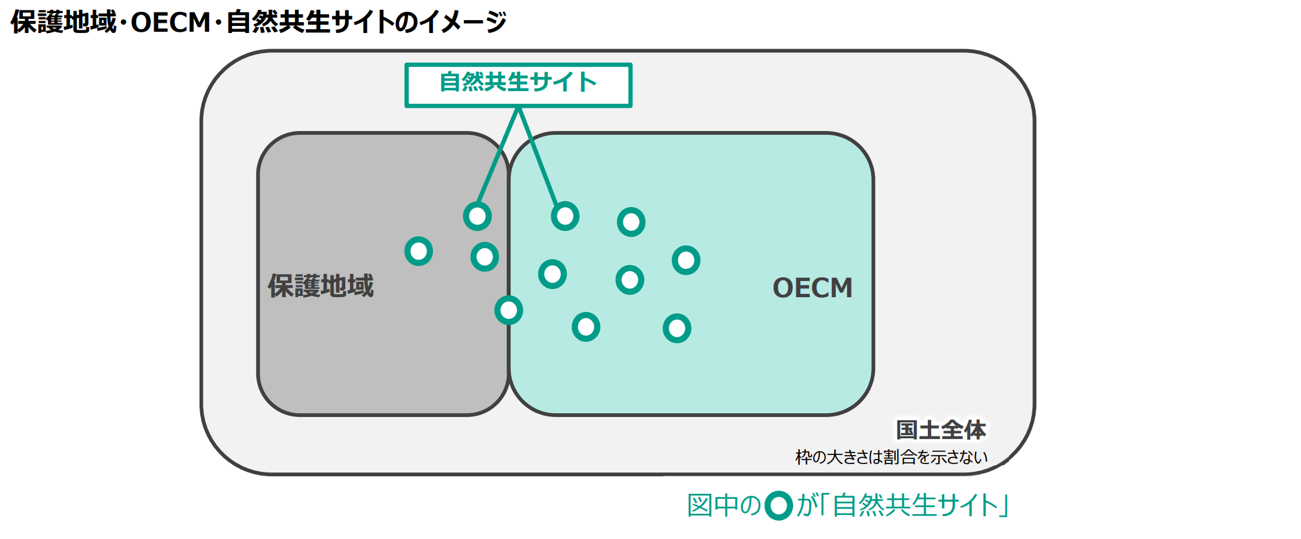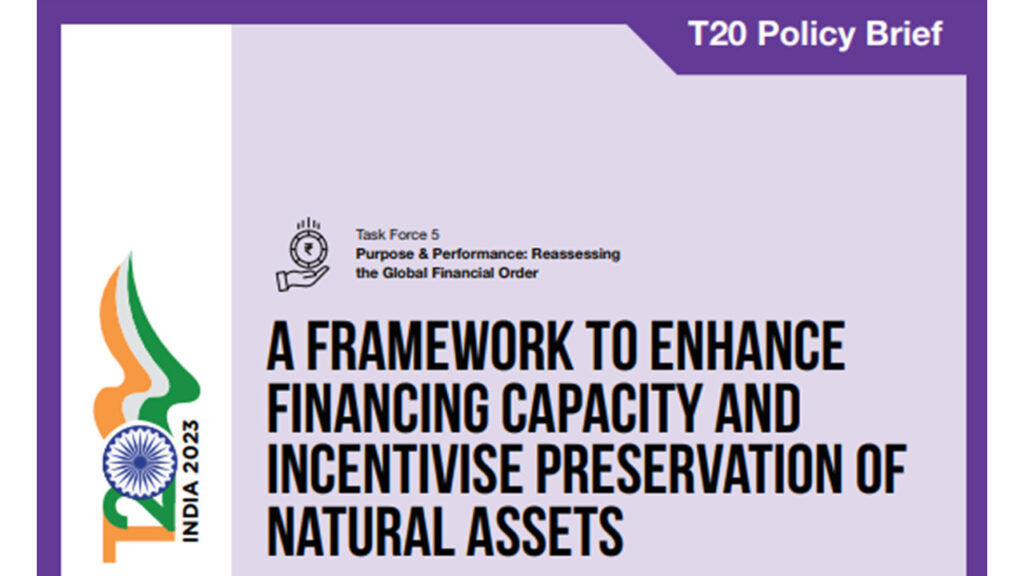INDEX
In recent years, the term "Nature Positive" has become a key word in the realization of biodiversity. Nature Positive means "to halt and reverse the loss of biodiversity in order to put nature on a recovery track.
Nature Positive is not only about so-called nature conservation, but also about transforming society and the economy as a whole to contribute to the conservation of biodiversity.
30 by 30 target
The "30 by 30 goal" is a notable goal to achieve Nature Positive.
The "30 by 30" goal, which aims to effectively conserve at least 30% of the land and ocean as healthy ecosystems by 2030, was pledged at the G7 summit in June 2021.
30by30 was also incorporated into the Kunming-Montreal Biodiversity Framework adopted at the 15th Conference of the Parties (COP15) to the Convention on Biological Diversity in December 2022.
As of 2021, only 20.51 TP3T of land and 13.31 TP3T of sea are recognized as protected areas in Japan.
While protected areas allow for strong enforcement and conservation of the natural environment, they are also difficult to expand.
OECM
The "Other Effective area-based Conservation Measures (OECM)" were created to solve this problem.
An OECM is defined as "a geographically delineated area, other than a protected area, that is governed and managed in a manner that continuously achieves positive long-term outcomes for in situ biodiversity conservation, together with associated ecosystem functions and services and, where appropriate, cultural, spiritual, socioeconomic, and other community-related values. The definition is as follows.
Simply put, these are areas that contribute to biodiversity conservation outside of protected areas.
This OECM and traditional protected areas will occupy at least 30% of the country's land.

(Source: Other Effective Area-Based Conservation Measures (WDOECM))
So how do we expand OECM?
Natural symbiosis site
Japan has introduced "natural symbiosis sites" as part of its efforts to increase OECM.
Natural symbiosis sites are areas where biodiversity is being conserved through the efforts of the private sector.
| Site Name | administrative divisions of Japan: Tokyo-to, Hokkai-do, Osaka-fu and Kyoto-fu | applicant |
|---|---|---|
| Hokkaido University Uryu Research Forest | Hokkaido (northernmost of the four main islands of Japan) | National University Corporation Hokkaido University |
| Igawa Forest | Shizuoka prefecture (Chuubu area) | Juzan Co. |
| Oze (Ozegahara, Ozenuma, Oze Togura Forest) | Gunma prefecture (Kantou area) | Tokyo Electric Power Holdings, Inc. |
| Toyota Mie Miyagawa Forest | Mie prefecture (Kinki area) | Toyota Motor Corporation |
| Nippon Paper Industries Houou Company Forest | Yamanashi prefecture (Chuubu area) | Nippon Paper Industries Co. |
Among the areas applied for by companies, organizations, and local governments, those areas judged by the Ministry of the Environment to have biodiversity value and to conserve biodiversity are certified as sites for symbiosis with nature.
Then, the areas certified as nature symbiosis sites, excluding overlaps with protected areas, will be registered in the international database as OECMs.

(Source: Ministry of the Environment, "Results to date on the establishment and management of OECMs")
In October 2023, 122 areas were certified as natural symbiosis sites.
List of nature symbiosis sitesPrepared by the author from
The above figure is an interactive map, and the circles on the map represent natural symbiosis sites.
○Click to see information (site name, applicant, and area) for each symbiosis site (location is approximate). The size of the circle indicates the size of the site in three levels.
As the figure shows, as of February 2024, many nature-symbiosis sites have been certified in the Kanto, Chubu, and Kansai metropolitan areas.
Companies and OECM
The OECM is one of Nature Positive's global indicators.
Therefore, companies that have OECM-registered sites can let people know that they are directly contributing to the international goal of 30 by 30.
By being registered with OECM, you can expect the following benefits
Communicate to the community and publicize the value of the site.
Increase in corporate value
Contribution to Society and Local Communities
Disclosure of environment-related information
In addition, economic incentives and tax benefits are being considered for natural symbiosis sites.
Conclusion
Nature Positive is a must-achieve goal to realize a society that can live in harmony with nature.
To achieve the goal, the first step is to expand the area where the ecosystem is conserved.
OECM and natural symbiosis sites are expected to play an important role.
aiESG participates in the TNFD Forum, which supports the Task Force on Nature-related Financial Disclosure (TNFD). Recognizing the importance of developing business strategies that contribute to natural capital and appropriate information disclosure, we support the research and development of products and services that are compatible with ESG perspectives, as well as the formulation of marketing and branding strategies.
If your company faces challenges in researching and developing ESG-conscious products and services, as well as in formulating marketing strategies, please feel free to contact us.
Contact us:
https://aiesg.co.jp/contact/
reference
Other Effective Area-Based Conservation Measures (WDOECM)
https://www.protectedplanet.net/en/thematic-areas/oecms?tab=OECMs
On the promotion of setting up and managing OECMs:
https://www.env.go.jp/council/content/12nature03/000118697.pdf
The results to date regarding the setup and management of OECM:
https://www.env.go.jp/content/000147427.pdf
Matching Trial and Support Certificate Model Trial WG:
https://www.env.go.jp/content/000165236.pdf
Related page
Report List : Regulations/Standards
https://aiesg.co.jp/topics/report/tag/基準-規制/
[Press Release] aiESG Participates in the Task Force on Nature-related Financial Disclosures (TNFD) Forum
https://aiesg.co.jp/topics/news/2309_tnfd/
[Press Release] aiESG cooperates with Taisei Corporation in the development of its "Nature Positive Evaluation Methodology".
https://aiesg.co.jp/topics/news/20231101_taisei-nature-positive/
【【Explanation] What is TNFD? A new bridge between finance and the natural environment
https://aiesg.co.jp/topics/report/230913_tnfdreport/
Commentary] G20T20 Policy Brief
~Proposal to achieve the Global Biodiversity Framework Targets in the G20 countries by 2030~.
https://aiesg.co.jp/topics/report/g20_report/
Commentary] G20T20 Policy Brief ~Proposal for a Financing Mechanism to Promote the Conservation of Natural Capital
https://aiesg.co.jp/topics/report/230807_g20t20_report/














